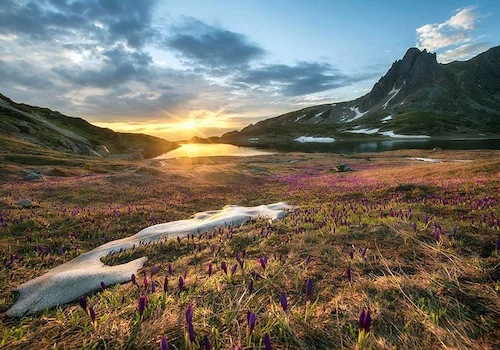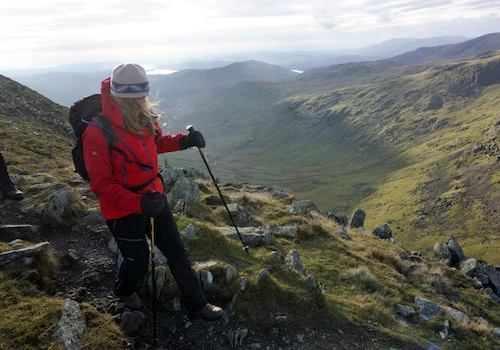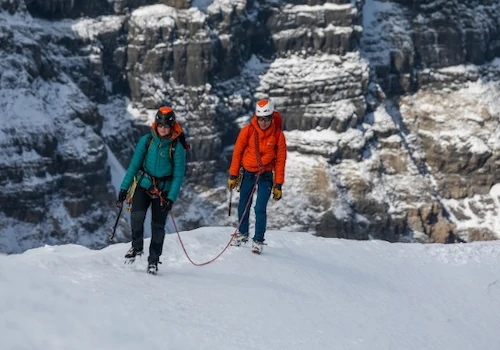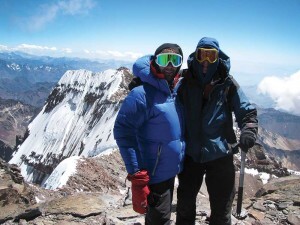
- Expeditions
By Region
By Month
By Grade
By Height
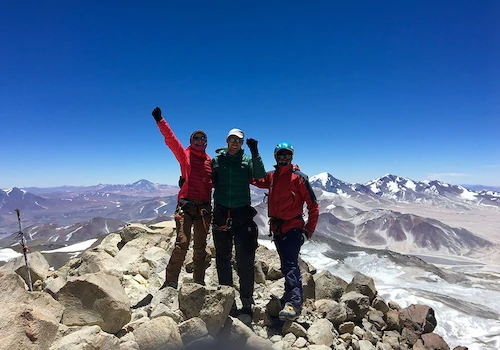
- Treks
- UK & Alpine
- Schools
- Hire
- News
- Shop
Be prepared rather than being left at camp!
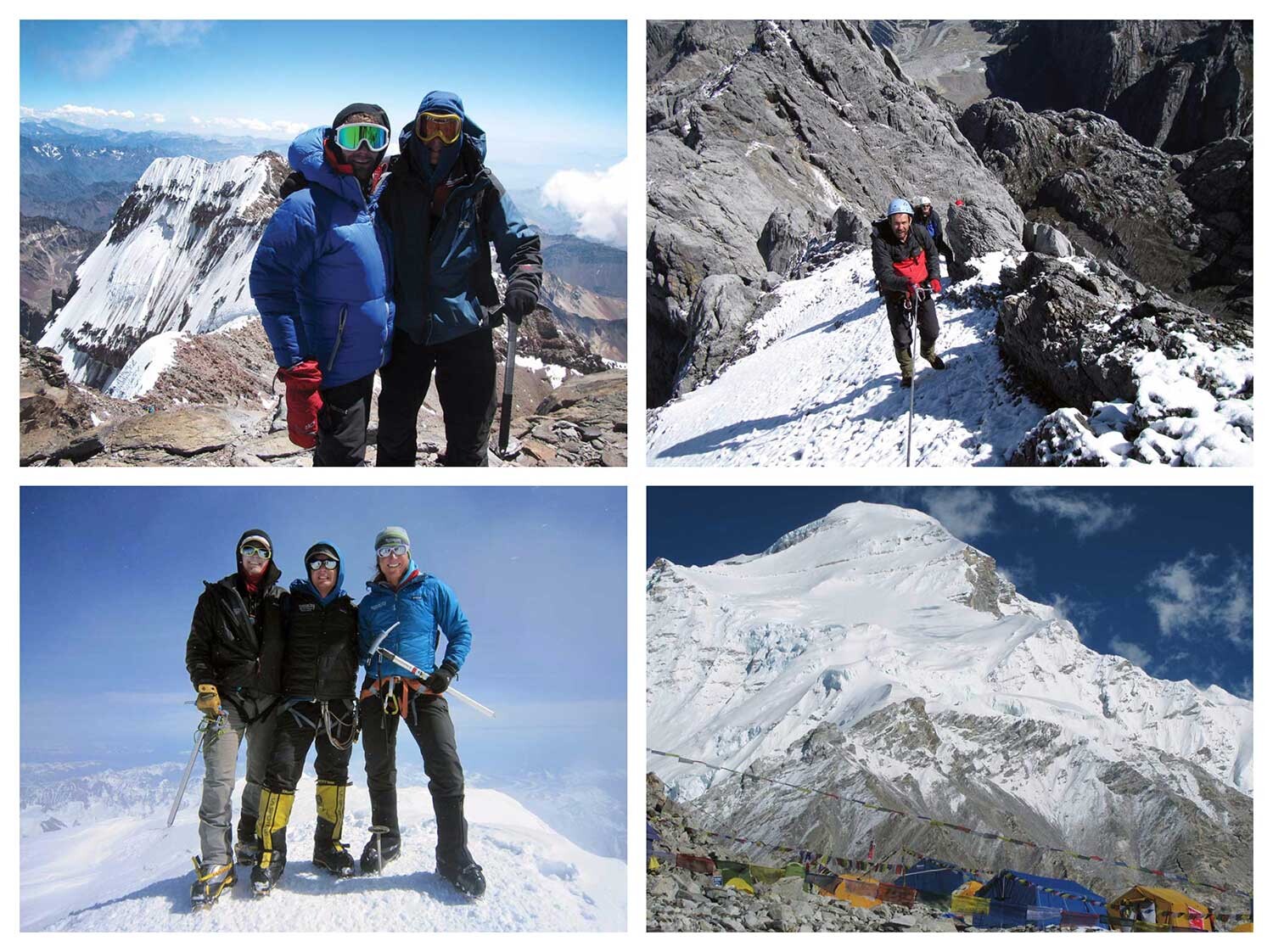
How’s your personal organisation?
Knowing your gear, layering, glove systems, getting ready in sub-zero conditions, being on time and being ready to accept the unexpected. On paper all this appears so simple, but fumbling with gloves in a sub-zero blizzard can result in frost-bitten fingers very quickly. Overheating due to poor layering can result in dehydration, which can lead to altitude sickness. Being late can anger your teammates who are outside freezing and politely cursing as they wait for you! Expedition organisation is an essential part of being ready for your trip.
The discomfort level of cold weather camping: Helping to erect tents, moving stones and digging snow platforms, boiling water, melting snow, eating freeze dry food. Getting up in the morning in sub-zero temperatures, lighting a stove to boil water and forcing down freeze dry food can all add to the ‘enjoyment’ or the ‘downfall’ of your expedition.
Aconcagua
The highest peak in South America, often described as a trekking peak that is ‘technically easy’ due to being ‘technically’ straightforward. However, this does not mean it is ‘easy’ and that everyone attempting it will be able to climb it without ANY difficulty. For example; look also at the length of the climbing day, the amount of altitude between each camp, the number of camps and the weather that you are likely to encounter… could any of these factors make it more difficult for YOU ?
Many people just focus on fitness (asking: am I fit enough? Or, how fit do I have to be?). Fitness is just one aspect of what is required. Mountain skills, cold weather camping skills, personal organisation and knowing how to care for yourself in harsh conditions all play an equal part. If you can’t cope with these, then your fitness alone won’t get you to the top but could get you into trouble.
Mountain Skills
You must be able to walk on crampons and use an ice axe – think: can you free wheel and move without thinking about each foot placement? What happens if you slip or lose your footing; do you know how to stop yourself flying down into oblivion, or at very least, onto the nearest rocks that could break your leg! Can you avoid stabbing your leg with each foot movement (you have ten or twelve sharp ‘teeth’ waiting to bite your ‘backside’ so to speak). The more control you have, the quicker and safer you will be.
Carrying a weighted rucksack of just 14kg can, after 8 hours, weigh so heavy on your thigh muscles and be so crippling to weak knees, that you will need to use your trekking poles – however strong you may feel (and believe it or not, you really need to learn to use these properly for maximum support). Sounds great and you will have spent a great deal of money for these levels of sadistic pleasure. Get it right – come with the appropriate skills and guess what… you will ENJOY the challenge of climbing Aconcagua.
After all, more often than not it is the greater the harshness of our environment and the greater hardship we have to face, that achieves the greatest satisfaction and fulfillment once achieved.
Insider Tip
Before embarking on the trip, gain experience of altitude and come having previously climbed a snowy 6000m peak, it is an enormous jump from Kilimanjaro to Aconcagua. For sheer enjoyment, climb from the Vacas Valley and avoid the normal crowded Horcones Route.
View our confirmed Aconcagua expeditions for 2017 into 2018Carstensz Pyramid
At 4884m, Carstensz Pyramid is the highest peak in Australasia, making it part of the Seven Summits challenge. The remote peak of Carstensz maintains a sense of mystery, rising from the dense jungle of Papua (formerly Iria Jaya), and often-shrouded in mist. An expedition to this intriguing landscape is not just a climbing venture, but a journey back in time through tribal ancestries and an incredible rich and rewarding experience.
Logistically it is a difficult mountain to access – almost impossible for an individual. Tourism is in its infancy here and you will almost certainly need the expertise of a UK commercial operator or a trusted local provider, to break through the bureaucracy and bribery required to cross the varying tribal communities. These experienced providers can bring together a magnificent trek into Base Camp, supported by the mysterious Dani Tribe. You must however leave behind any western standards of time and service, Papua is what makes it special; ‘time has no meaning’, food will be basic, the tribes people walk with machetes and you stop when it rains! It is an experience not to be forgotten. If time is short a good operator can organise a helicopter in and out of Base Camp BUT ask yourself why you are doing it? as you will miss out on the most rewarding part of an expedition to Carstensz Pyramid, yes you will get the peak ticked, but your memories will be short lived! Savour the whole experience, be relaxed and enjoy it ALL.
Previous experience needed?
To climb from Base camp on this limestone mountain you will definitely need previous rock climbing and scrambling skills. You should have climbed a number of multi pitch climbs at Severe (5.3-5.4) grading ideally in boots and not just rock shoes, know how to abseil/rappel with confidence and finally completed a number of grade 3 scrambles. The Skye Cullin Ridge, Aonach Eagach Ridge and Crib Goch all make for the ideal training.
Insider tip
Travel with an experienced operator who will take away the risks associated with this region and join with an open mind, relax and just go with the flow, as time has no real meaning here.
Read more about Carstensz PyramidDenali
The tough one. One of the more physically demanding that will feel like an 8000m peak. You will have no Sherpa or Porter support, just YOU to move your two plus weeks of belongings for the ascent, so expect to carry or pull 60kg.
The normal and most popular route is via the West Buttress, a challenging ascent up 40-50 degree snow slopes with an impressive ice head wall and final knife-edge ridge that take you to the highest point in North America.
In order to be best prepared for this ascent, you should be confident on Scottish grade II snow and ice, with experience of alpine roped travel and well-practiced crevasse rescue skills. Alaskan weather and storms are unforgiving and you should know how to survive in the most rigorous and arctic conditions
There is a quota system on the mountain, whereby the National Park restricts the number of climbers, meaning you must book your permit or operator many months in advance (six months is getting quite late!).
To legally operate on Denali, UK providers must be linked to one of the six Alaskan concessionaires as we are. Adventure Peaks also helps support you in your training in the lead up to your expedition and will usually guarantee other British climbers will be part of your team.
Inside tip
Be in top physical shape and be prepared to suffer with a smile.
Read more about DenaliCho Oyu
Described as ‘the easiest of the world’s 8000m peaks’ – which is probably true, it is also the most objectively safe peak with the least inherent dangers.
Don’t forget though, that at 8000m you are at extreme altitude and you’ll need experience in order to feel that it is indeed ‘easy’– any ascent to 8000m in altitude is otherwise exceptionally tough. Make sure you have experience of at least 7000m, in conjunction with good solid logistics support, both in terms of staffing, mountain and safety equipment.
Having Sherpa support is essential; don’t be tempted by a low cost expedition that does not offer such support and be sure the actual Sherpa to client ratio is stated, anything less than 1:2 will not give you the support needed to make a successful summit. If it is not stated ask! and be sure the ratio of help quoted, does not include the cooks or assistants!
Do you need oxygen, I would always say YES, unless you have strong prior experience of 8000m Peaks. To climb without oxygen greatly reduces your chance of success and the dangers of cold injuries and death increase dramatically as you will be moving much more slowly and your body won’t be able to generate sufficient warmth. Still want to try without? then at least carry some as an option, or for emergency use.
Ensure the group you are joining has good communication equipment, VHF radios for clients, Sherpas and support staff, satellite telephones to keep in touch with home and more importantly to obtain weather forecasts! Check where the forecasts are obtained (a general online freebie? or a specialist paid-for provider? there is a BIG difference in detail). Emergency oxygen, quality medical supplies, a stretcher and Gamow bag, form the basic safety kit and a good operator would also have direct access to a pre-paid medical advice service back in the UK.
There are two types of experienced mountain guide available for this type of ascent:
- Those with multiple ascents of the same peak
- An all rounder, who has climbed other 8000m Peaks
It is the depth of their experience that counts
Don’t worry too much if they haven’t climbed the actual mountain they are guiding you on. Remember, they are going to be well motivated to summit with you, adding to their own tick-list, before moving on to guide their next 8000m Peak with the same enthusiasm and vigor!
A non-coordinated group of individual climbers should be avoided, chaos on the mountain, or a free for all is the last thing you want, an expedition leader is essential.
Trying to ‘read between the lines’ of an advertised expedition, when not in the know, can be difficult. You should do as much research of your own as possible in order to arm yourself with the right list of in-depth questions. This will help ensure that you do not end up with a ‘bare bones’ operator who puts you on the mountain with no leader, no coordination and minimal or no infrastructure to get you out of trouble when the need arises. Remember, much needed infrastructures do cost. Cutting costs usually means you are cutting infrastructure and your own safety!
There are many local operators willing to take you up, in fact many Nepali are now calling themselves Sherpas, and guides – there are hundreds of non-registered Nepali companies now advertising. It is becoming a booming and very unsafe business.
Costs to climb in Tibet
These have risen enormously in the past couple of years and it is now normal to expect to pay in the region of £16,000-£20,000+ for a well-organised expedition.
Insider tip
Climb a glaciated 7000m peak first, such as Himlung Himal, Baruntse, Peak Lenin or Muztagh Ata.
Read more about Cho Oyu
About Dave Pritt
Dave Pritt is the Director of Adventure Peaks. With over 30 years of mountaineering feats, he is a very experienced high altitude mountaineer who has led expeditions to K2, Broad Peak and five Everest expeditions. Dave has completed the 7 summits, led an expedition to Ski the South Pole Last Degree, Satopanth in India and in 2007 he guided Ian McKeever to break the world record for the seven summits in 156 days. He is lucky enough to have climbed on the majority of our advertised peaks, but the Tien Shan remains his favourite destination.

